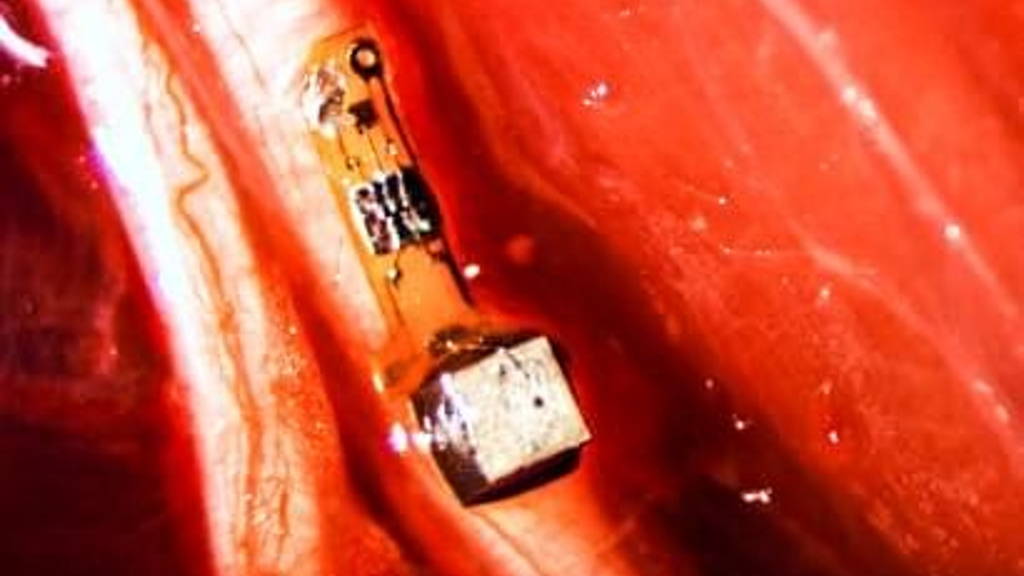“You can almost think of it as sort of an internal, deep-tissue Fitbit, where you would be collecting a lot of data that today we think of as hard to access,” said Michel Maharbiz, an associate professor of electrical engineering and computer science at the University of California, Reuters writes. Fitbit developes fitness and health related wearables such as smart bands.
The wireless sensors would be both powered by and relay data by means of ultrasound waves. This means its no longer neccessary to wired sensors. Current medical technologies employ a range of these wired electrodes attached to different parts of the body to monitor and treat conditions ranging from heart arrhythmia to epilepsy.
For example, In 2012 quadriplegic Jan Scheuerman fed herself for the first time using a robotic hand controlled by her thoughts. A sensor was wired into her brain which read her neural activity. The idea here, according to Maharbiz, is to make those sensor technologies wireless. "There is a lot of excitement about the possibility to use neural signals, whether from the peripheral nervous system or the central nervous system, to control or actuate some motor prosthetic."
The sensors consist of piezoelectric crystals that convert ultrasound waves into electricity that powers tiny transistors in contact with nerve cells in the body. The transistors record neural activity and, using the same ultrasound wave signal, send the data outside the body to a receiver.
The researchers are also working on enabling their neural dust to transmit data into the body. This would transform these sensors into potential tools to treat neurological disorders. The next step is make neural dust even smaller.
###Dust-sensor###
The sensors - the scientists call them motes - are about one millimeter in size, or a grain of sand.
So far the research team has been able to use their sensors on the peripheral nervous system - the part of the body’s nervous system that lies outside the brain and spinal cord. To work in the brain the motes need to be about 50 microns in size, which is he width of a single human hair.
“It’s a meaningful advancement in recording data from inside the body,” states Dr. Eric Leuthardt, a professor of neurosurgery at Washington University in St. Louis. He believes however that demonstrations of capability are one thing, but making something for clinical use, to be used as a medical device, is still going to have to be worked out. Before implanting wireless sensors into the brain, the science of understanding how the brain processes and shares information needs to advance further.
Find out more about ‘neural dust’ here, in a publication on the Berkely News website.
The wireless sensors would be both powered by and relay data by means of ultrasound waves. This means its no longer neccessary to wired sensors. Current medical technologies employ a range of these wired electrodes attached to different parts of the body to monitor and treat conditions ranging from heart arrhythmia to epilepsy.
For example, In 2012 quadriplegic Jan Scheuerman fed herself for the first time using a robotic hand controlled by her thoughts. A sensor was wired into her brain which read her neural activity. The idea here, according to Maharbiz, is to make those sensor technologies wireless. "There is a lot of excitement about the possibility to use neural signals, whether from the peripheral nervous system or the central nervous system, to control or actuate some motor prosthetic."
Change the way health is monitored
This reality is a long way off – seeing as human testing will not start for another two years - but the new research is a big step towards making the reality real. In the near term these tiny sensors may change the way we monitor our health, according to Reuters.The sensors consist of piezoelectric crystals that convert ultrasound waves into electricity that powers tiny transistors in contact with nerve cells in the body. The transistors record neural activity and, using the same ultrasound wave signal, send the data outside the body to a receiver.
The researchers are also working on enabling their neural dust to transmit data into the body. This would transform these sensors into potential tools to treat neurological disorders. The next step is make neural dust even smaller.
###Dust-sensor###
The sensors - the scientists call them motes - are about one millimeter in size, or a grain of sand.
So far the research team has been able to use their sensors on the peripheral nervous system - the part of the body’s nervous system that lies outside the brain and spinal cord. To work in the brain the motes need to be about 50 microns in size, which is he width of a single human hair.
“It’s a meaningful advancement in recording data from inside the body,” states Dr. Eric Leuthardt, a professor of neurosurgery at Washington University in St. Louis. He believes however that demonstrations of capability are one thing, but making something for clinical use, to be used as a medical device, is still going to have to be worked out. Before implanting wireless sensors into the brain, the science of understanding how the brain processes and shares information needs to advance further.
Find out more about ‘neural dust’ here, in a publication on the Berkely News website.








